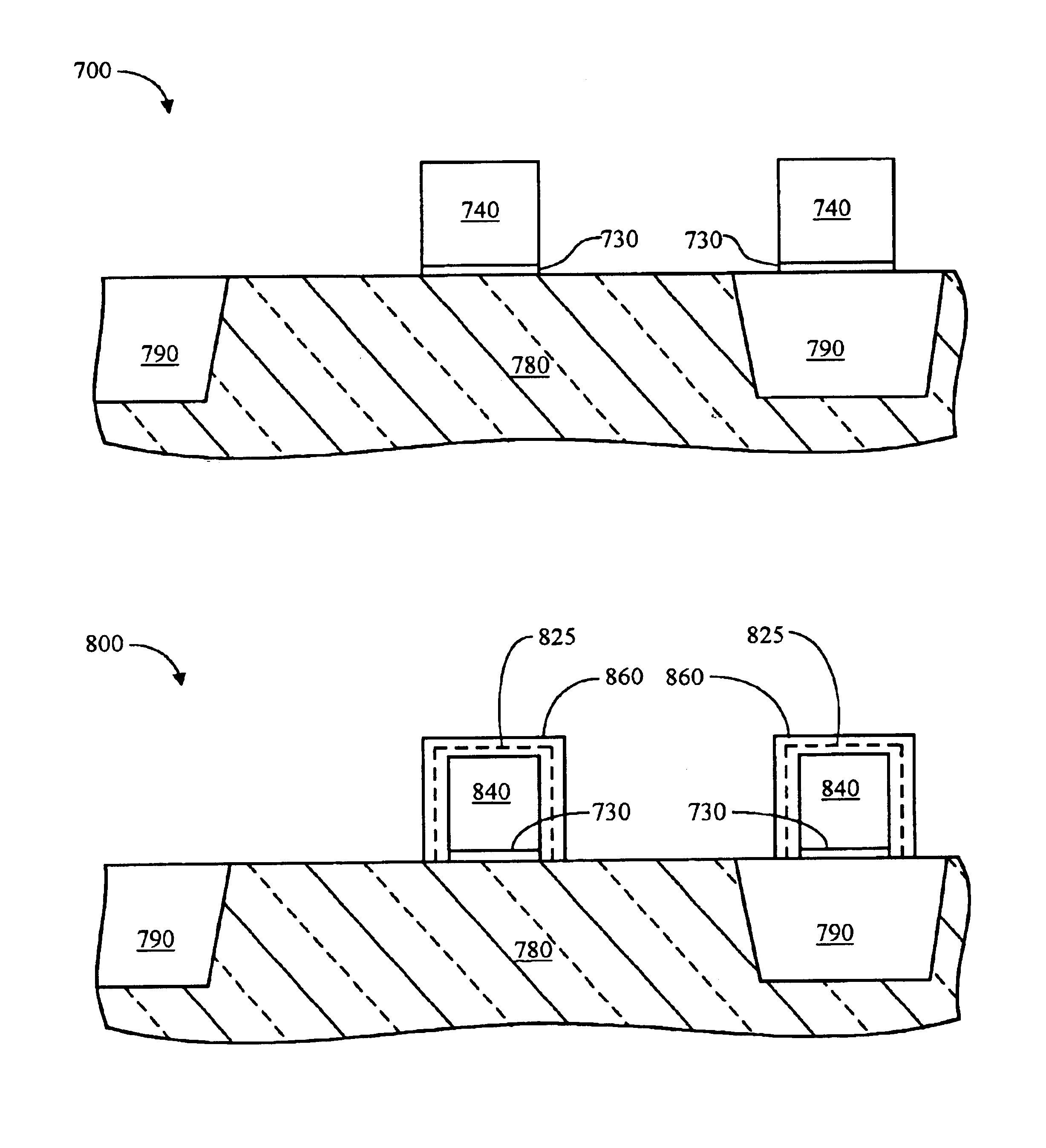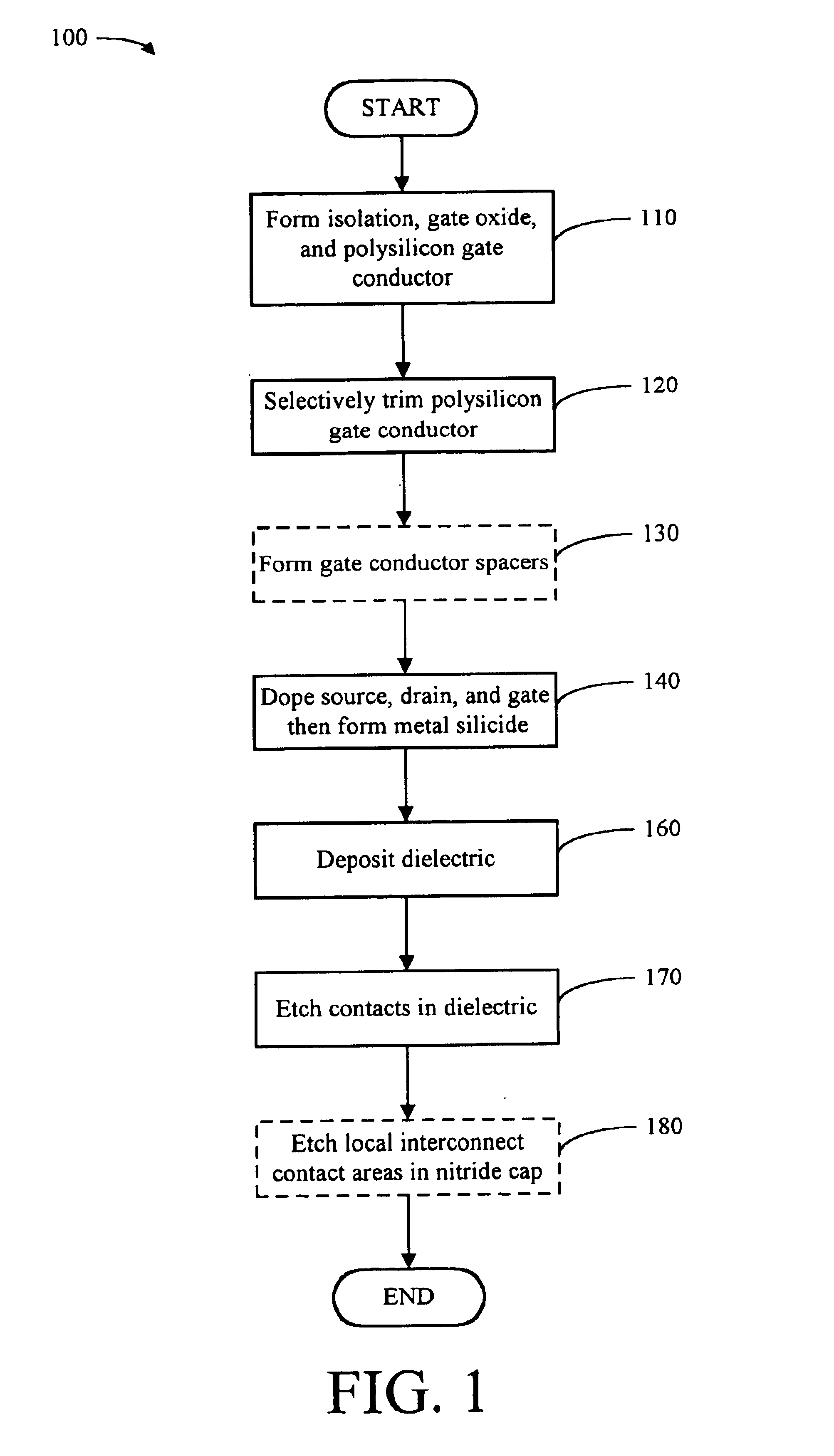Method for selective trimming of gate structures and apparatus formed thereby
a gate structure and selective trimming technology, applied in the direction of basic electric elements, semiconductor/solid-state device manufacturing, electric apparatus, etc., can solve the problems of increasing the risk of producing a distorted or defective gate conductor, the misalignment of device components, and the failure of the device, so as to reduce the sheet resistance and reduce the sheet resistance
- Summary
- Abstract
- Description
- Claims
- Application Information
AI Technical Summary
Benefits of technology
Problems solved by technology
Method used
Image
Examples
example 2
Trimming by Selective Surface Nitridation or Oxidation. In a further embodiment of gate conductor processing by means of laser mediated film growth, one may use these methods to selectively trim the gate conductor line width by means of growing a dielectric film around the entire exposed surface area of the gate conductor. In this application, one generally desires to grow about 10-30 nm of nitride (or oxide), rather than the 50-100 nm of nitride generally described for the borderless contact copending patent application referenced above. As a result, when nitride is grown to trim the gate conductor, milder process conditions are used for ammonia pressure and the number of pulses. When nitride is grown, the energy fluence is maintained at 400-500 mJ / cm.sup.2 per pulse in order to effectively melt the surface of the polysilicon.
A wafer substrate is provided as described in EXAMPLE 1 above, except that the oxide and nitride spacers on the gate conductor are eliminated. In place of the...
PUM
 Login to View More
Login to View More Abstract
Description
Claims
Application Information
 Login to View More
Login to View More - R&D
- Intellectual Property
- Life Sciences
- Materials
- Tech Scout
- Unparalleled Data Quality
- Higher Quality Content
- 60% Fewer Hallucinations
Browse by: Latest US Patents, China's latest patents, Technical Efficacy Thesaurus, Application Domain, Technology Topic, Popular Technical Reports.
© 2025 PatSnap. All rights reserved.Legal|Privacy policy|Modern Slavery Act Transparency Statement|Sitemap|About US| Contact US: help@patsnap.com



